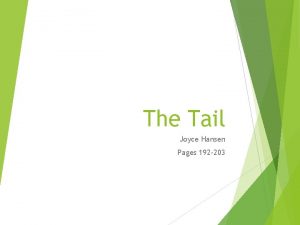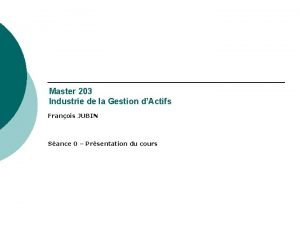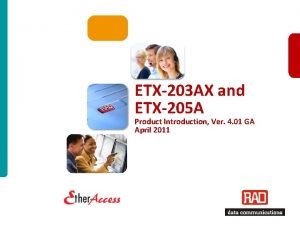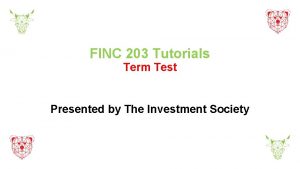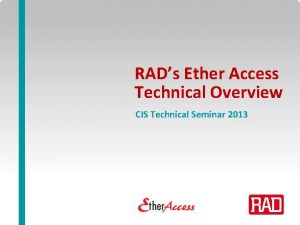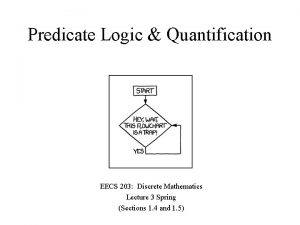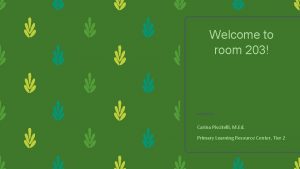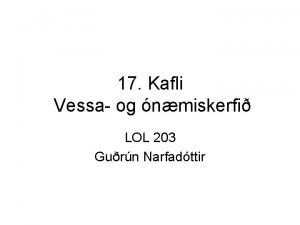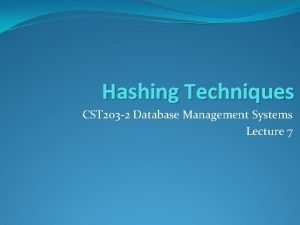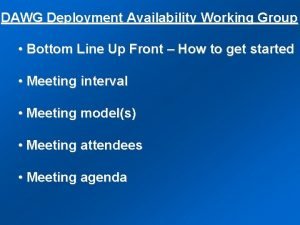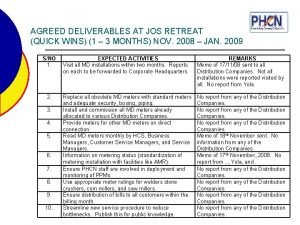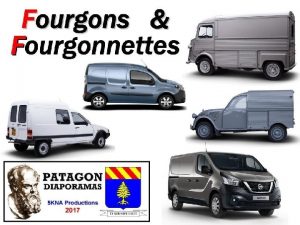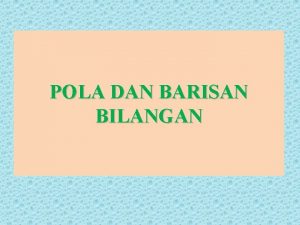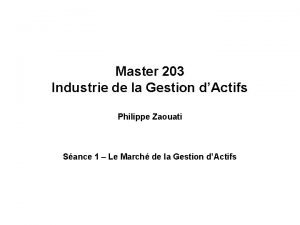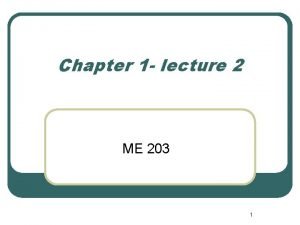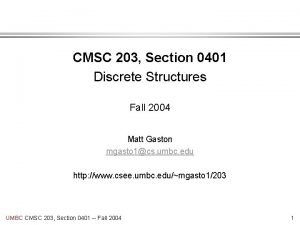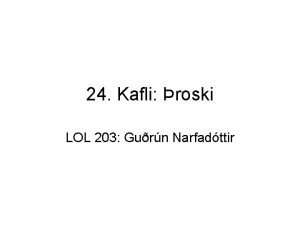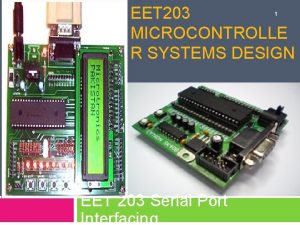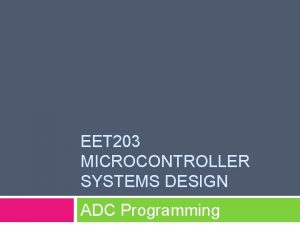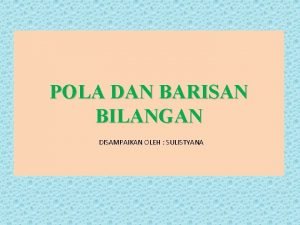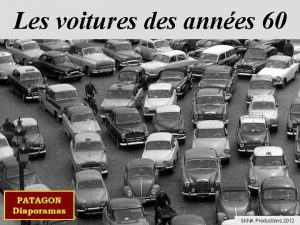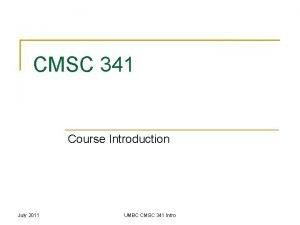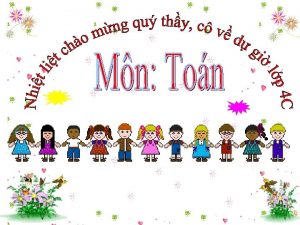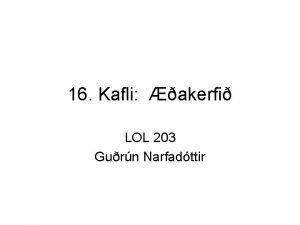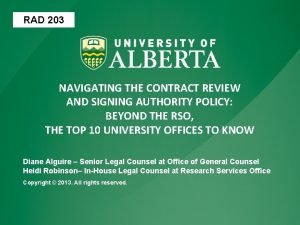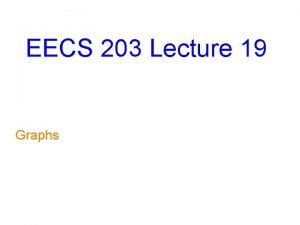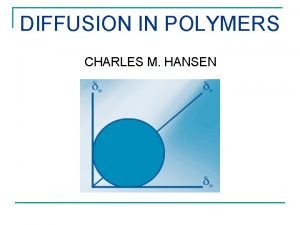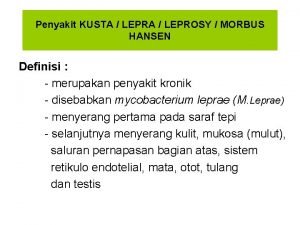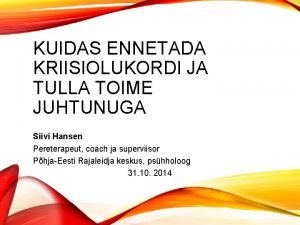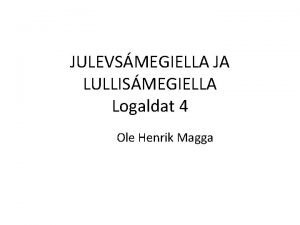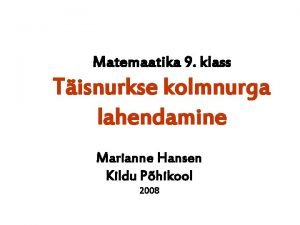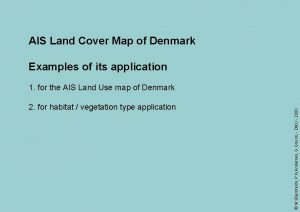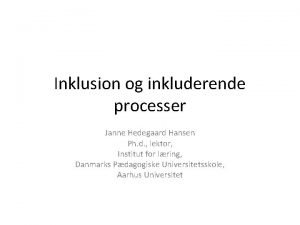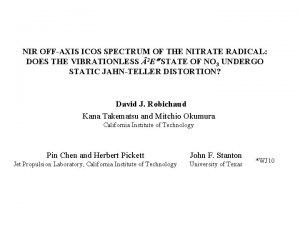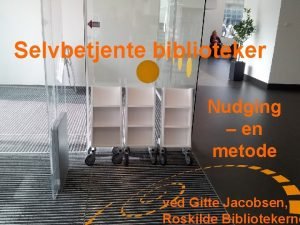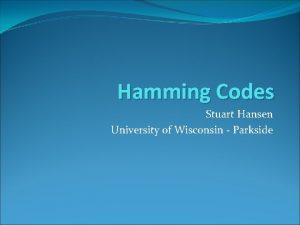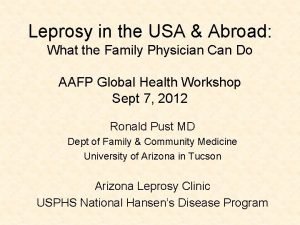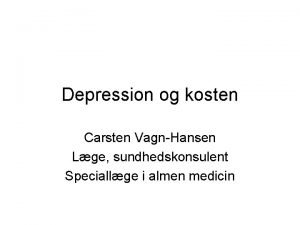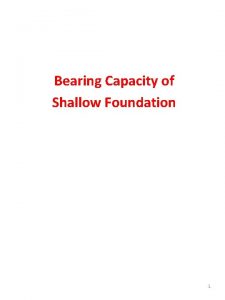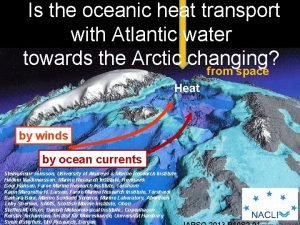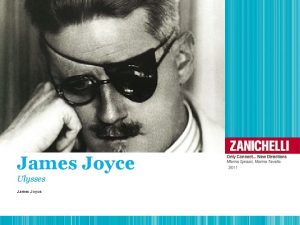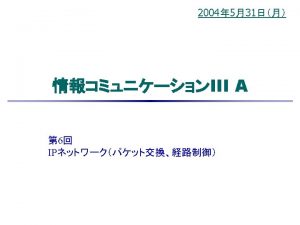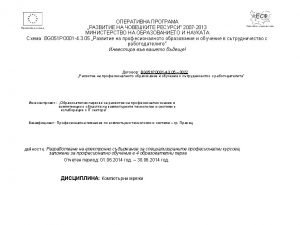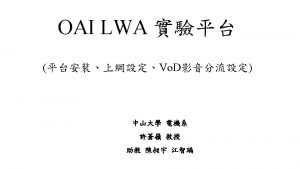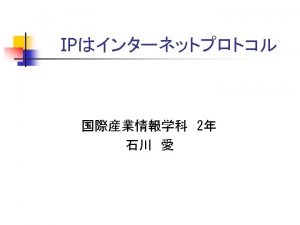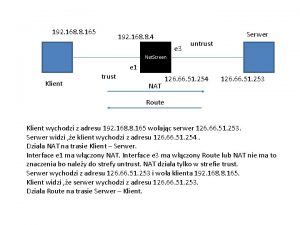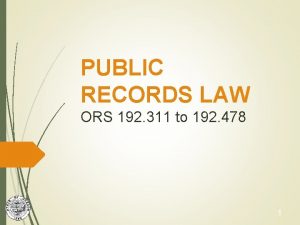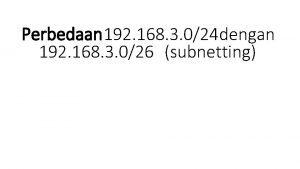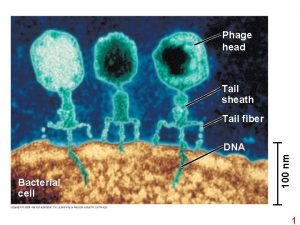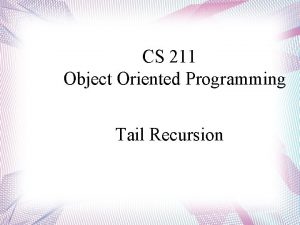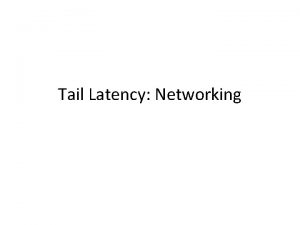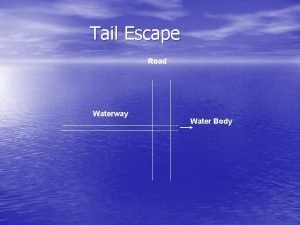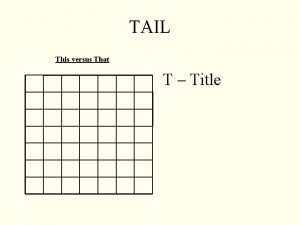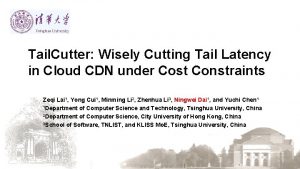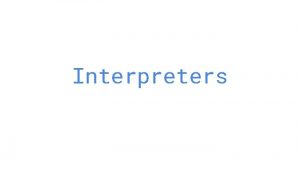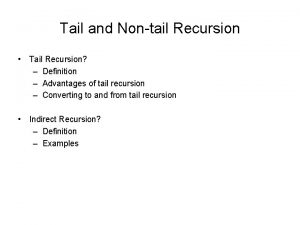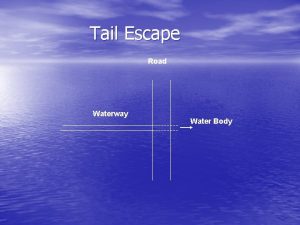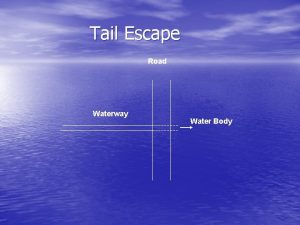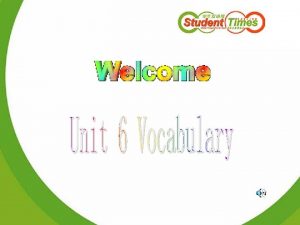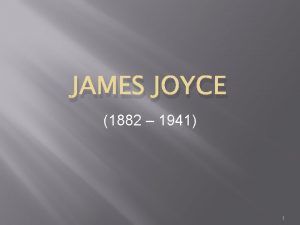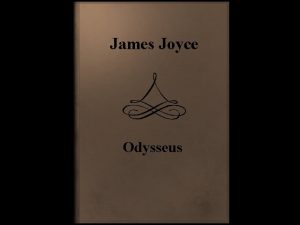The Tail Joyce Hansen Pages 192 203 Characterization





























































- Slides: 61

The Tail Joyce Hansen Pages 192 -203

Characterization

Learning Target I can explain how the characters respond or change as the plot advances.

Who is a character in a story? A character is a person or creature that interacts with others within a story.


Direct Characterization when an author tells you directly about the character’s personality. For example: “Dena was a kind, caring individual. ” The author tells us what the character is like.

Indirect characterization when an author reveals a character’s personality through his or her looks, relationships, actions or dialogue. For example: “Dena felt so sad when she saw the hurt little chipmunk that she began to cry. She immediately approached it to try and help it get better. ” What does this description reveal about Dena? The author shows us what the character is like.

Work Period Read the story “The Tail” by Joyce Hansen. Pages 192 -203

Questions 1. How does Tasha feel about babysitting her brother? 2. What does this reveal about her character? 3. Does the writer use direct or indirect characterization? 4. What character trait does Tasha show by deciding to go to the playground?

Activity Complete the Graphic Organizer

Closing List three things you learned today. List two things that interest you that you’d like to learn more about. Write One question you still have.

Lesson Two

Learning Target I can explain how the characters respond or change as the plot advances.

Conflict It is what prevents the main character from getting what he or she wants The plot is driven by the conflict and it is THE MOST IMPORTANT FEATURE OF THE STORY There are two types of conflicts: Internal and External

Opening The Big Question Video

Conflict

Internal Conflict PERSON VS. SELF



External Conflict


External Conflict Protagonist (main character) VS. Antagonist (bad guy/villain)


External Conflict PERSON VS. SOCIETY


External Conflict PERSON VS. NATURE


External Conflict PERSON VS. FATE


External Conflict PERSON VS. TECHNOLOGY


External Conflict PERSON VS. THE SUPERNATURAL


Conflict in “The Tail” What type of conflict can we identify in the story “The Tail”? Can you explain how this conflict has affected the main character? How is the story’s conflict related to the events or the characters’ actions?

Work Period Complete the conflict worksheet.

Ticket Out The Door 3 -2 -1

Lesson three Making Inferences

Learning Target I can use evidence from the text to support my analysis of what the text says and inferences I make.

Essential Question What does it mean to make an inference? Listen carefully while watching this video clip.

OPENING

Making Inferences An inference is using observation and background to reach a logical conclusion. You probably practice inference every day. For example, if you see someone eating a new food and he or she makes a face, then you infer he does not like it. Or if someone slams a door, you can infer that she is upset about something.


Work Period Making Inferences Worksheet

Closing 3 -2 -1

Lesson Four Constructed Response

Learning Target I can use evidence from the text to support my analysis of what the text says and inferences I make.


Restate the prompt in your own words to write your topic sentence. Answer the question- make sure to answer all parts of the question. Cite evidence from the text. - You MUST quote the text. Use evidence based terms to begin your sentences. Explain and extend - Explain how this evidence supports your answer. Give examples from connections you made.

Restate the question in your own words.

Answer the question Sometimes you can restate and answer the question in the same sentence. For example: Question: What is your name? Answer: My name is Mary.


Practice: Restate and answer the following questions 1. What did you do when you got up this morning? 2. Where do you live? 3. How old are you?

Cite Evidence This means you will look back to the text to find specific examples that support your answer. Quote the text! Use evidence based terms to begin your citation. I know this because the speaker says, “I smile because I see me in her eyes. ”


Sentence Starters for citing textual evidence The text says… In paragraph __ it says… The author says… I know this because… According to the text…

Explain and Extend You will explain how this evidence supports your answer. This illustrates that she was happy because people smile when they are happy.

Sentence Starters for explaining your evidence This shows that… This illustrates that… As you can see… For this reason…

Closing Ticket Out the Door

Lesson Five

Learning Target I can summarize a text and leave out my personal opinion.

Activity Complete the quiz
 The tail by joyce hansen questions and answers
The tail by joyce hansen questions and answers Printed pages vs web pages
Printed pages vs web pages Characterization
Characterization Indirect characterization
Indirect characterization Master 203
Master 203 Etx-220a
Etx-220a Etx203ax
Etx203ax [email protected]
[email protected] 550 nin en yakın yüzlüğü
550 nin en yakın yüzlüğü Lg bp 203
Lg bp 203 Finc 203
Finc 203 Etx 203 ax
Etx 203 ax Eecs 203
Eecs 203 Dorm room 203
Dorm room 203 Lol 203
Lol 203 Cst 203
Cst 203 Cpsc 203
Cpsc 203 Afi 10-203
Afi 10-203 203-019-4
203-019-4 203 fourgonnette
203 fourgonnette Eet203
Eet203 Eet 203
Eet 203 Fha 203h disaster loan
Fha 203h disaster loan Jumlah deret 5+12+19+26+...+355 adalah
Jumlah deret 5+12+19+26+...+355 adalah Master203
Master203 Eet 203
Eet 203 Me 203
Me 203 Cmsc 203 umbc
Cmsc 203 umbc 952 203-0000
952 203-0000 Lol-203
Lol-203 Eet 203
Eet 203 Eet 203
Eet 203 Eecs 203
Eecs 203 Rad etx-203ax commands
Rad etx-203ax commands Un=-3n+7 jika un=-203 tentukan n
Un=-3n+7 jika un=-203 tentukan n 1948 peugeot 203
1948 peugeot 203 Cmsc 341 umbc
Cmsc 341 umbc 258 nhân 203
258 nhân 203 Resource management guide 203
Resource management guide 203 Vena saphena parva
Vena saphena parva Rad 203
Rad 203 Eecs 203
Eecs 203 Charles m. hansen
Charles m. hansen 5a morbus hansen
5a morbus hansen Siivi hansen
Siivi hansen Giergev
Giergev Kaatetite projektsioonid
Kaatetite projektsioonid Ditte nan hansen
Ditte nan hansen Janne hedegaard hansen
Janne hedegaard hansen Dr ginger hansen
Dr ginger hansen Jaron hansen byu
Jaron hansen byu Heather hansen
Heather hansen Pelle guldborg hansen
Pelle guldborg hansen Stuart hansen
Stuart hansen Hansen disease
Hansen disease Carsten vagn hansen kolesterol
Carsten vagn hansen kolesterol Hansen bearing capacity factors table
Hansen bearing capacity factors table Bogi hansen
Bogi hansen Maria jose hansen
Maria jose hansen Kasper fogh hansen
Kasper fogh hansen Maria jose hansen
Maria jose hansen Ole henrik hansen
Ole henrik hansen
